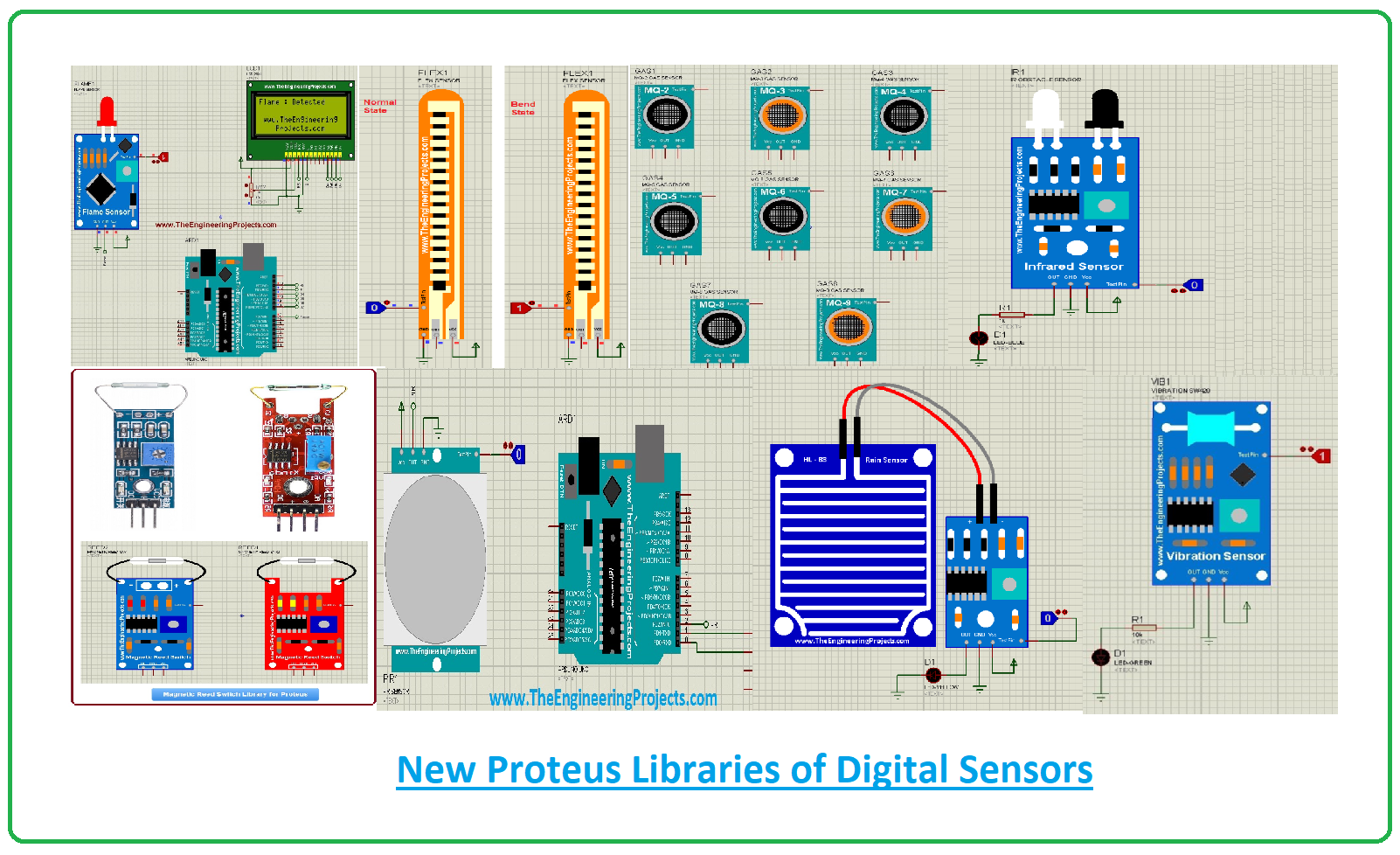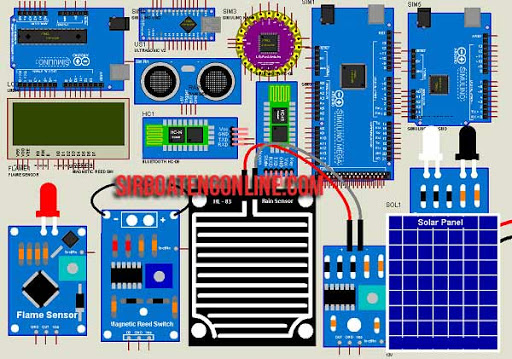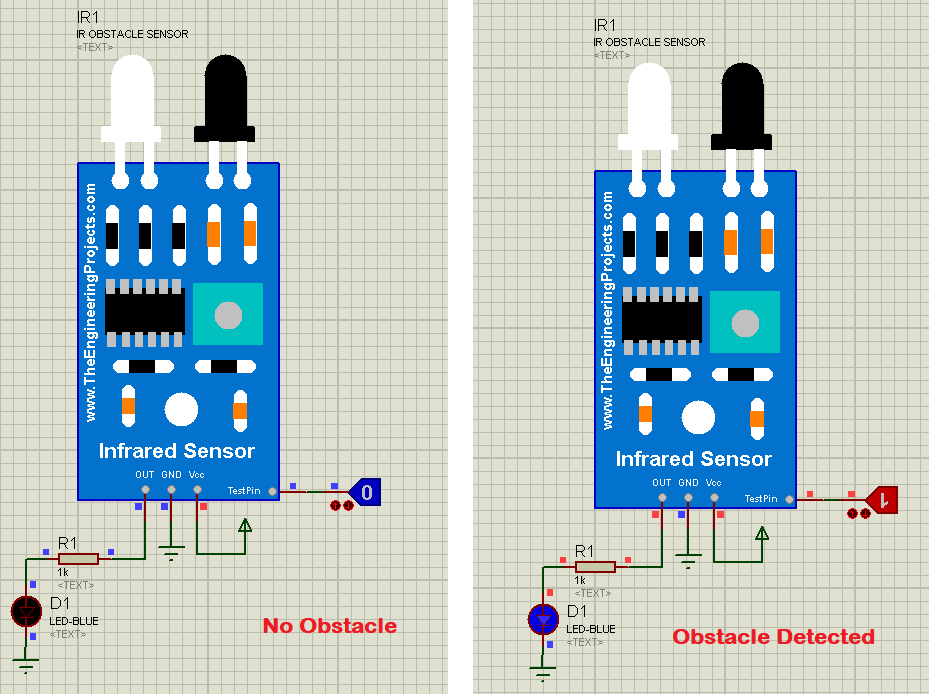
I have encircled the Program File in above figure and you can see I have selected the InfraredSensorsTEP.HEX. Here's the screenshot of Properties Panel for this Infrared Sensor:. In the Program File section, browse to the file InfraredSensorTEP.HEX which you have already downloaded and placed in the Library folder of Proteus.  Now double click this Infrared Sensor and its Properties Panel will open up. If this Pin is LOW, then sensor will remain normal and if it's HIGH then sensor will behave as it has something in front of it. TestPin => As Proteus is a simulation software so we can't actually place something in front of this sensor. OUT => That's output pin and it will get HIGH when this sensor will find some obstacle in front and will remain LOW in normal condition. Vcc => You need to provide +5V to this pin. As you can see in above figure that we have four pins on our Infrared sensor, which are:. Now place this IR Obstacle Sensor in your Proteus and if everything goes fine then you will get something as shown in below figure:. In the components section, make a search for Infrared Sensor, as shown in below figure:. Once you have added the files in the Library folder, then restart your Proteus software. If you are using Proteus 8 software, then you should have a look at How to add new Library in Proteus 8 Professional. Place all these three files in the Library folder of your Proteus software. After downloading this file extract it and you will find three Library files in it, named as:. First of all, download the Library files of this IR Sensor by clicking the below button:. Infrared Tracker Sensor Library for Proteus. IR Proximity Sensor Library for Proteus. So, let's have a look at How to use this Infrared Sensor Library for Proteus: You should also have a look at this list of New Proteus Libraries for Engineering Students. The IR signal transmits from the IR transmitter and if it has some obstacle in front of it then it bounces back and received by the IR receiver. The one we have designed has a transmitter & receiver on a single chip. Some of these modules have transmitter & receiver on separate chips and are mostly get activated when someone interrupts the light. There are different types of Infrared Sensors & modules available in the market. So, if you want to work on this IR Sensor then I would suggest you to first design its simulation and then try your luck with hardware.
Now double click this Infrared Sensor and its Properties Panel will open up. If this Pin is LOW, then sensor will remain normal and if it's HIGH then sensor will behave as it has something in front of it. TestPin => As Proteus is a simulation software so we can't actually place something in front of this sensor. OUT => That's output pin and it will get HIGH when this sensor will find some obstacle in front and will remain LOW in normal condition. Vcc => You need to provide +5V to this pin. As you can see in above figure that we have four pins on our Infrared sensor, which are:. Now place this IR Obstacle Sensor in your Proteus and if everything goes fine then you will get something as shown in below figure:. In the components section, make a search for Infrared Sensor, as shown in below figure:. Once you have added the files in the Library folder, then restart your Proteus software. If you are using Proteus 8 software, then you should have a look at How to add new Library in Proteus 8 Professional. Place all these three files in the Library folder of your Proteus software. After downloading this file extract it and you will find three Library files in it, named as:. First of all, download the Library files of this IR Sensor by clicking the below button:. Infrared Tracker Sensor Library for Proteus. IR Proximity Sensor Library for Proteus. So, let's have a look at How to use this Infrared Sensor Library for Proteus: You should also have a look at this list of New Proteus Libraries for Engineering Students. The IR signal transmits from the IR transmitter and if it has some obstacle in front of it then it bounces back and received by the IR receiver. The one we have designed has a transmitter & receiver on a single chip. Some of these modules have transmitter & receiver on separate chips and are mostly get activated when someone interrupts the light. There are different types of Infrared Sensors & modules available in the market. So, if you want to work on this IR Sensor then I would suggest you to first design its simulation and then try your luck with hardware. 
I hope it will help in your Embedded Systems Projects particularly related to robotics and automation.

This IR sensor is not available in Proteus and we are sharing this library for the first time.

In today's tutorial, I am going to share a new Infrared Sensor Library for Proteus. Hello friends, I hope you all are doing great.








 0 kommentar(er)
0 kommentar(er)
